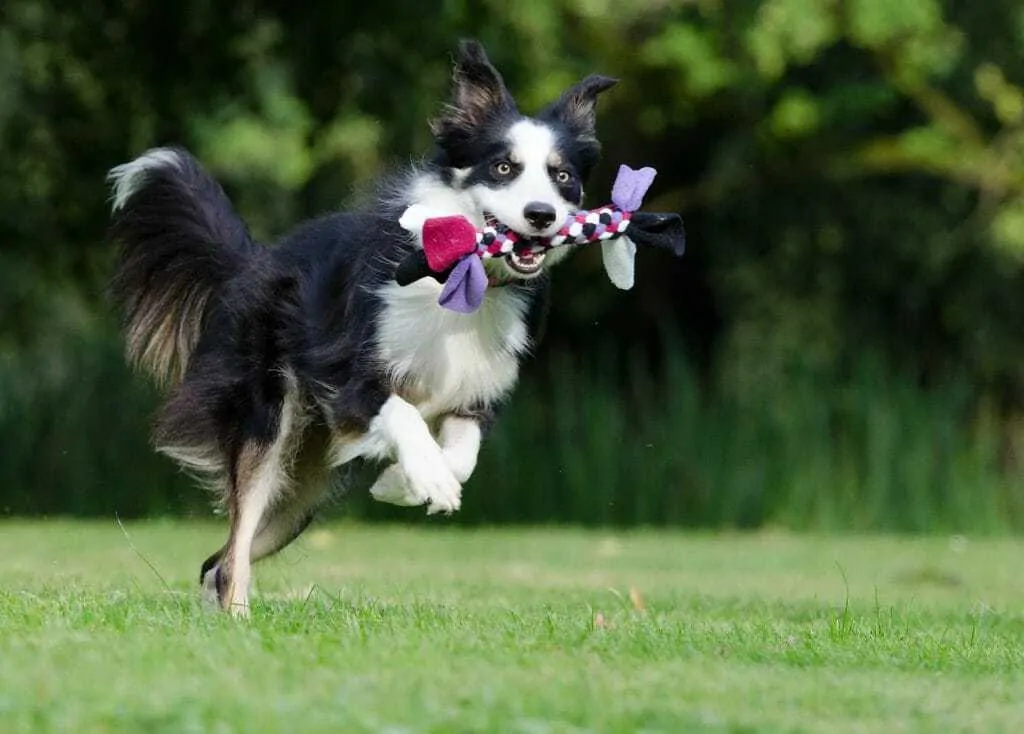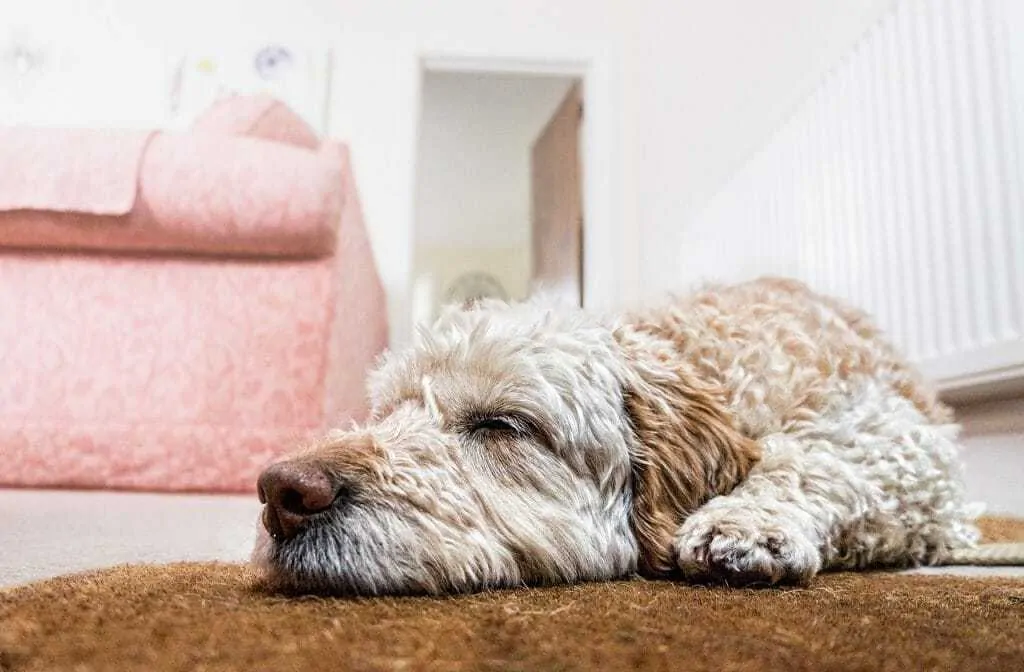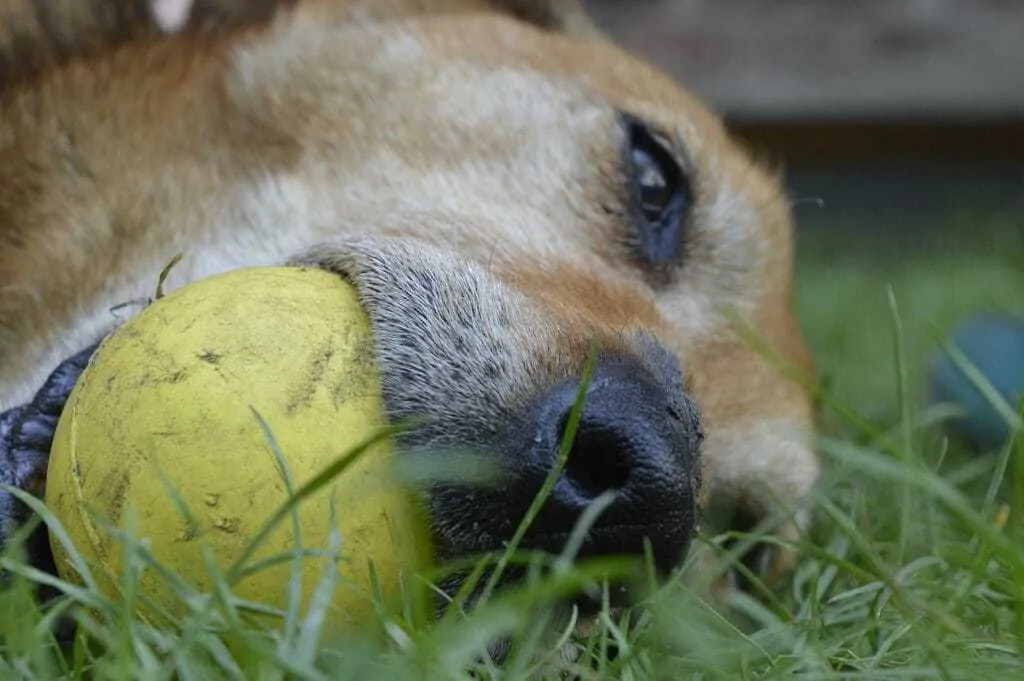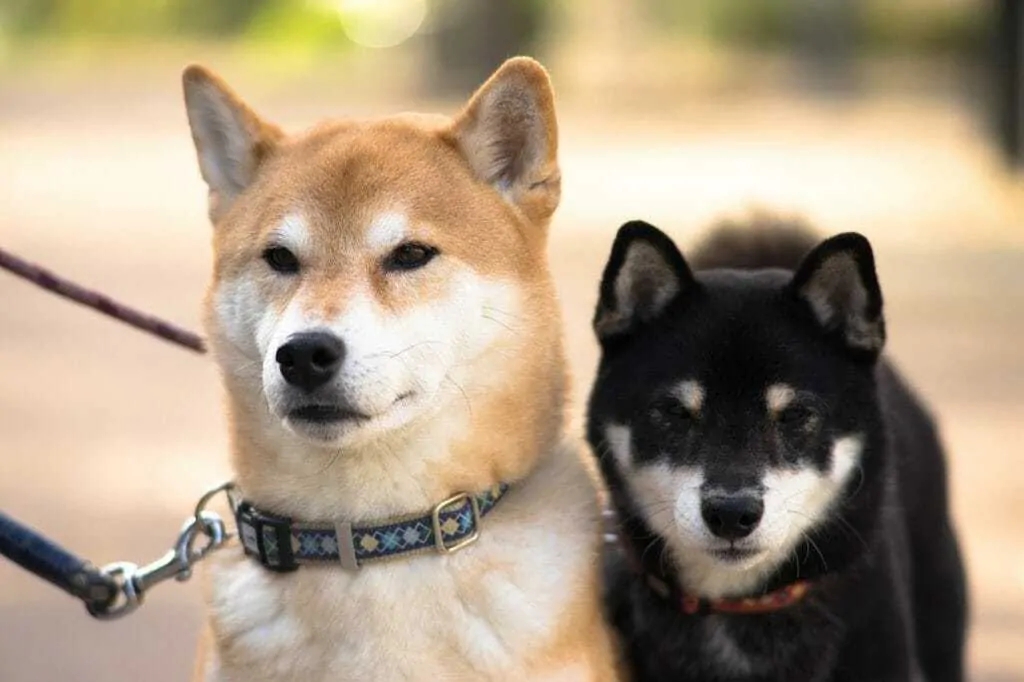It is a sad fact that dogs in rescue that are blind or have severe sight issues, like deaf dogs, usually have a much harder time being adopted.
Don’t forget that humans may rely on our vision more than any of our other scents but dogs are very different, smell is their primary sense and this means that the loss of sight for a dog is less dramatic than it is for a human.
Yes, it is true that you may need to make different adjustments than you would with a full -sighted dog but it doesn’t mean that these have to be a problem or that your dog can’t live just as full and happy a life as a dog that can see.
For dogs that are born blind, they will never have known any different and so they have the easiest time of it. Dogs that lose their sight gradually also have the time to get used to the changes over time. For dogs that lose their sight suddenly, they have the most adjusting to do but with time, patience and encouragement from their owners the blind dog will learn to adjust. The key is to help make your blind dog feel safe and to trust you.
Often blind dog owners have talked about how the bond with their dog has increased and that living with blind dogs has taught them a great deal about resilience, adaptability, bravery, trust and how to love life and live in the moment despite being a blind dog.
There is no reason why a blind dog should not be able to live just as full and enjoyable life as a sighted on
Contents
1. What can cause blindness in dogs?
Dogs can be born blind or they can develop blindness as a result of various conditions including cataracts, different types of retinal disease, optic nerve damage from glaucoma, an injury or accident or SARDS which is a sudden blindness disorder specific to dogs. As with humans, severe diabetes or the ageing process can also be a cause for sight loss.
There are certain breeds that are more genetically predisposed to blindness as a result of Cataracts including Huskies, Golden Retrievers, Yorkies, Boston Terriers and Poodles. Huskies are also more genetically predisposed to glaucoma, as are Shih Tzus.
Huskies can have a genetic predisposition towards sight problems
2. Make sure your home is a safe, blind-proofed environment
When a blind dog first moves into a new home or a dog has become blind, their environment can be confusing and overwhelming. It is important to make sure that any hazards are removed from the spaces your blind dog has access to in the home. You may wish to use baby gates, pad or remove sharp corners or objects that are accessible by your blind dogs. With time your blind dog will have a mental map of the house, much of which will have been created using their fantastic sense of smell and will be less likely to bump into things or get confused.
3. Don’t stop the blind dog from bumping into things altogether- it is an important part of their learning
Whilst you obviously don’t want blind dogs to become stressed or to injure themselves against a hazardous object it is important to let your blind dog ‘feel’ their way around the house and garden so that they can work out their orientation.
You may wish to initially gently guide them around the home on a leash to allow them to map out their space.
4. Routine is important for a blind dog
Try not to make any household changes without introducing your dog to them carefully. Don’t always shuffle your furniture around, this will confuse your dog’s mental map and could stress them out or increase the chance of an injury.
If you have children or messy housemates, encourage them to always tidy up after themselves. An unexpected toy or pulled out chair in their path can cause confusion and disorientation for your blind dog.
Always feed and water your blind dog in the same place so they know how to navigate there when they need to.
When you go out on walks, whilst it is nice to give them new experiences, for the day to day it is good to stick to a usual walk which your blind dog will be able to get used to and it will make it easier for them to relax and enjoy their surroundings.
Always keep water bowls located in the same position in the yard and house to allow your blind dog to know where they can access them
5. Consider the importance of clear vocal commands & gentle touch with a blind dog
When a dog loses their sight they can go through an initial period of feeling, understandably, very disoriented and they can be more anxious and fearful than normal. Your blind dog will need to rely much more on vocal commands rather than visual cues and touch prompts can also be very useful (although these should be introduced in a way that will not startle your dog, particularly if they are sound sensitive). You may need to start using useful guidance prompts. Giving your blind dog a relaxing massage can be a way to help them associate touch with something positive too.
As with any dog training, we would always recommend using reward-based, force-free techniques when introducing new commands and prompts to a blind dog, and speaking with a clear but very gentle and positive tone.
Clicker training can be even more useful with a blind dog as the consistent and clear marker is very useful for your dog to listen out for. For more information on how this type of training works read our Clicker Training 101 article.
If you are using touch to help with guiding your blind dog, make sure that they are comfortable with this first. If they startle easily, approach them slowly and make them aware you are there with some chatter. Everytime you touch them pair this with giving them a tasty treat so that they always know that contact equals something good.
It can be useful to teach your blind dog a hand touch command and this can allow you to guide them around new places by following your hand.
6. Handy commands for blind dogs
You may want to use specific commands for blind dogs that will be useful for helping your dog navigate.
“Watch/Wait” is a common one, used when teaching them they are coming towards an obstruction in their path and that they need to slow down/move. This one is often best introduced when your blind dog is on the lead as you can use this to help gently guide them and indicate in the beginning when you wish them to stop. When they respond to the command make sure you reward them with a tasty treat so that they understand they are offering the desired behaviour.
“Step up/down” is another commonly used ones for helping dogs navigate stairs. We always suggest that access to stairs is limited until you are very confident that your dog knows where they are and how to safely navigate them.
“Free” is a useful one for allowing your blind dog to understand they are in an large, unobstructed space. Whilst we don’t recommend walking your blind dog off leash generally, if you can find a totally secure and enclosed open space then it can be nice to allow your blind dog some off-leash freedom, everytime you let them off here and you use the word “free” they will hopefully start to associate the space with somewhere they can let off some steam.
If you can find a safe and secure enclosed space to allow your blind dog some off-leash freedom this can be a really great thing
7. Utilise the other senses of the blind dog
Dogs already have a super strong sense of smell. When they lose their sight, their other senses can become even more heightened. This can be really helpful for helping them orientate themselves around the house and garden.
Particular scents can be used in certain areas of the house. This can then also be useful should you move house or go on holiday. If your dog has a crate you can use a particular scent in this. That means if you are on an overnight stay somewhere else your dog will be able to find their crate and feel more safe and secure more quickly. You can also use a particular scent around the area their food and water bowls are orientated or at the top of any steps so that your dog will start to associate that smell with the introduction of stairs.
You can also use certain textures in particular areas of the house. Use rugs as identifiers of particular pieces of furniture or doorways. In the garden, you could perhaps use bark chips to indicate the periphery of some trees or other hazards.
Placing textured mats at door entrances can be a useful orienter for your dog
8. Don’t confine blind dogs to their “safe zone”
Whilst it is important to help your dog feel safe and relaxed when they first lose their sight, once they settle into their life without their vision, it is very important not to shelter them too much. Some owners can be guilty of not wanting to stress their dog out so they then fall into the trap of confining them to only their house and garden. This can unfairly limit their horizons and opportunities for stimulation. Your blind dog should be able to enjoy the big wide world just as much as a full-sighted dog. It is just about introducing it gradually, safely and in an encouraging and supportive way.
9. Don’t pick up blind dogs too much!
Another bad habit that owners can fall into, out of the best of intentions, is feeling you always have to pick them up to protect them. This can be a common instinct at first. You will want to reassure them and move them out of the way of a possible hazard. Don’t forget though that they do need to learn to feel their way around the home and if you pick them up and move them to another area this will disorientate them and muddle their mental map.
Of course, if they are looking for a cuddle up on the sofa, this is totally different. Often dogs that are blind crave physical contact more than sighted dogs, perhaps it helps them feel safer and more orientated. If they like to be in contact with you don’t discourage this.
If your dog is actively looking for some affection that is great but don’t always pick them up to move them from one space to another, this can confuse your dog’s mental map of a space
10. Make sure a blind dog has lots of enrichment
Don’t let your dog become introverted. You want them to be just as stimulated and engaged as a full-sighted dog. Pick toys that focus on their other senses, try toys which make a host of different noises to see what they engage the most with.
You could add a scent to a toy to help them find it, vanilla oil (in small quantities) is often used. If your dog likes playing with a ball you could put a few drops on a tennis ball as this will soak up the scent effectively. Or buy a to that already carries a scent impregnated on it.
Food-based toys are also very useful. A stuffed Kong or other treat dispensing toy can be very useful.
Scent-based activities are always great. Perhaps you will want to scatter pieces of their food or treats in the grass in the garden to encourage them to move around and find the rewards.
These types of activities are not only fun and stimulated but they can help to build up your dog’s confidence.
Scented toys can be useful for helping your dog to locate them more easily
Another well-meaning tendency is to stop your dog interacting because of a worry about them being scared or bullied.
Whilst interactions will need to be monitored more closely at first, it is important not to stop appropriate socialisation with other dogs. If your dog has always enjoyed the company of other dogs it is likely they will still enjoy this. Your dog will not be able to observe the body language signals they would as a fully sighted dog, so you will need to pay close attention and step in if required.
Sighted dogs can often form very strong bonds with blind dogs and there have been cases of them touchingly becoming their eyes and helping guide them when out on adventures.
Make sure that your dog stills gets appropriate and supervised interaction with other dogs
12. Other gear that may be handy for your blind dog
a) Consider using a “Blind” collar/lead/harness
It can be useful to use a collar or harness and leash with the words ‘I am Blind’ on them when you are out and about. People may not realise your dog does not have sight and they can startle them by approaching suddenly. It will also hopefully encourage them to give your dog space if they have a dog with them.
b) Bells for you, not your dog
You may want to use something to help your dog know where you are in the house or garden. Some people attach little bells to their shoelaces. Often your dog will be able to locate you by scent alone but there are some people that use these and feel that it is comforting for their dog.
Some people also attach these to other animals in the house too.
c) A Bumper/Halo
The most commonly used is the Muffin Halo Guide. This is often used as a transitional tool for dogs that have recently lost their sight and have lost their confidence. The harness with a front attached “halo” that will touch an obstruction before the dog does can be very useful for helping them navigate safely. It can be particularly useful for when out on walks. Most blind dogs do need help to become comfortable wearing it as it is a relatively bulky contraption in comparison with a normal harness but if this is done with lots of treats every time it goes on it is usually well accepted.
Hope this guide on caring for a blind dog was helpful. If a dog is blind, you should take extra care in caring for a blind dog and help it live the best life possible in spite of the blindness.
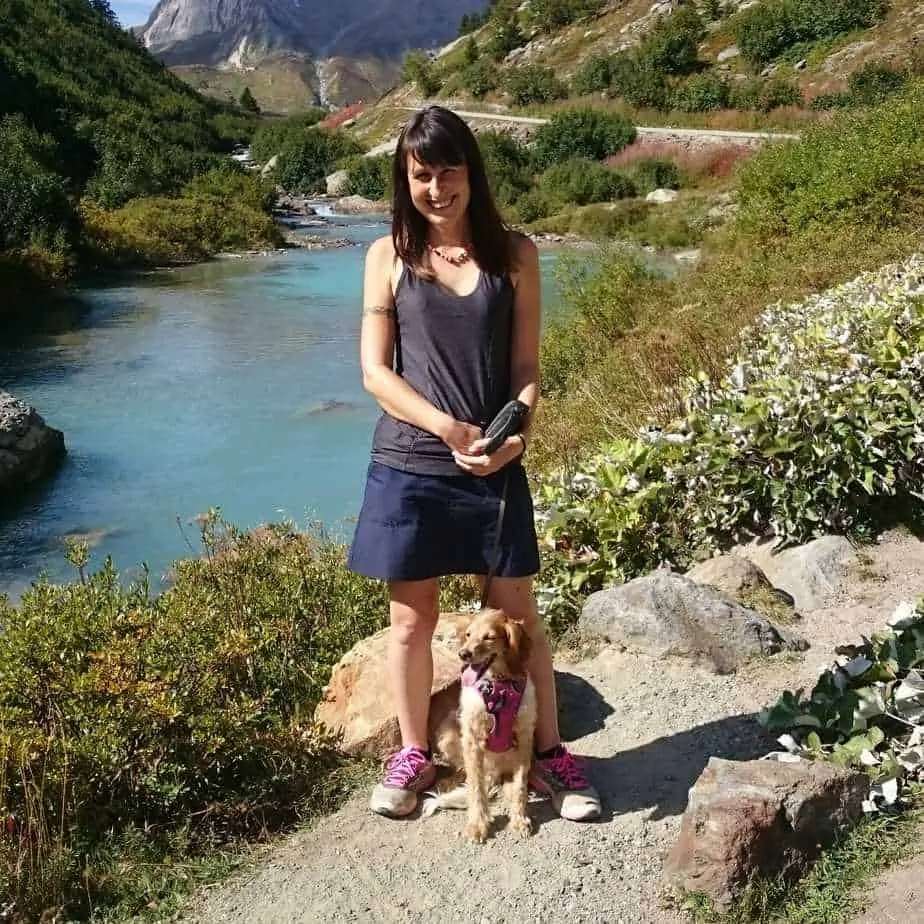
Gemma is an official dog nut and passionate traveller. Originally from the wonderful city of Edinburgh in Scotland, Gemma is now wandering across Europe with her rescue dog Annie. For ten years Gemma loved being surrounded by all things canine 24/7 whilst she ran a specialist doggy shop. The shop was a great community hub and, along with working closely with local rescues, Gemma provided customer support relating to canine behaviour and nutrition. It was a passion project and one that Gemma felt privileged to have created. She is also studying towards an Advanced Diploma in Canine Behaviour and is a huge advocate of dog rescue and promoting scientific methods of dog training.



